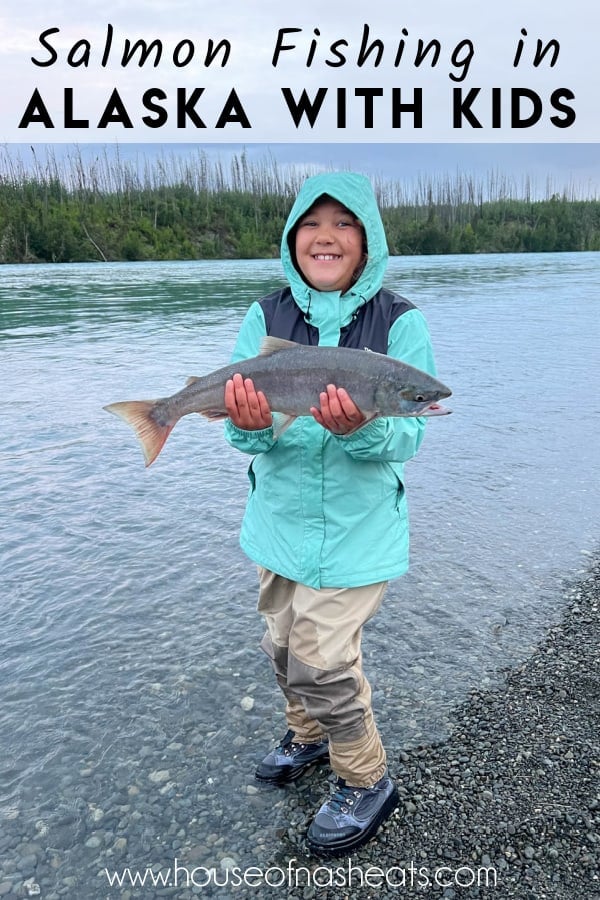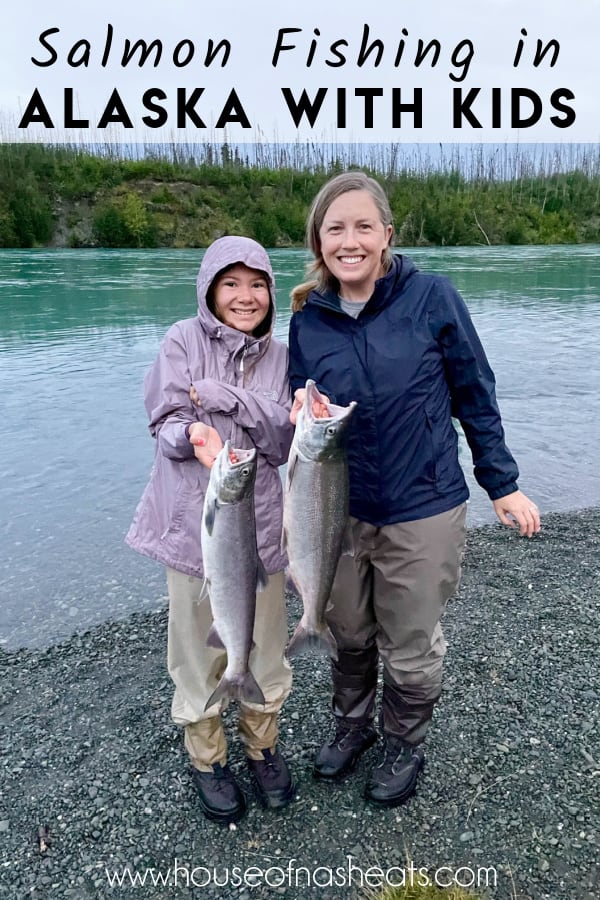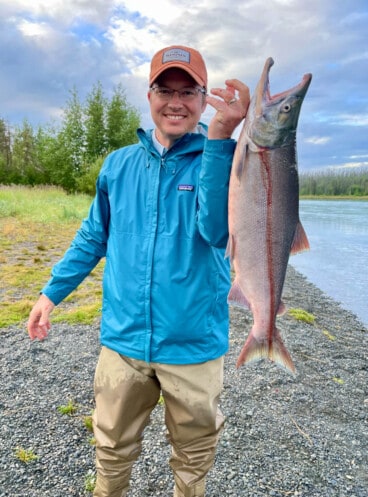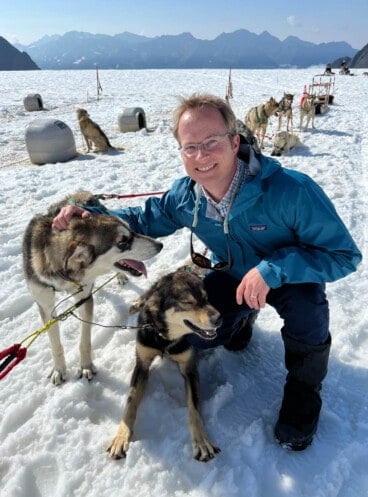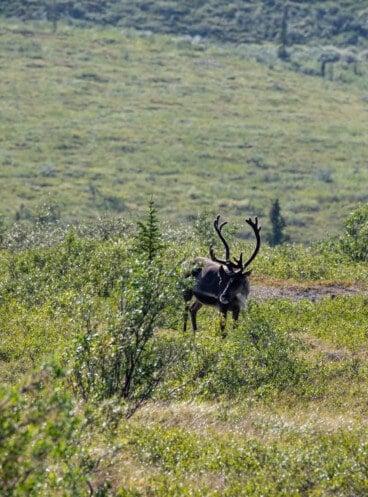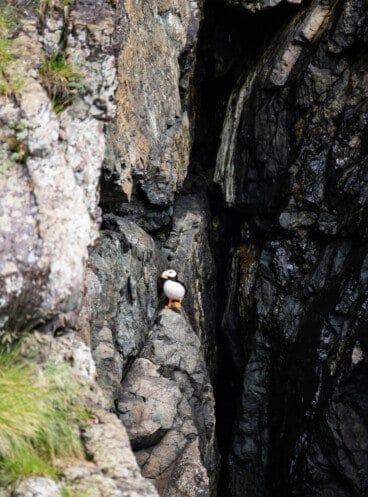Fishing for sockeye salmon on the Kenai River is an unforgettable experience that might be the highlight of your Alaska summer vacation. You will be surrounded by the beauty of the Kenai River and its stunning natural scenery while reeling in a trophy fish of your own!

Table of Contents
- The Kenai River Spawn
- Fishing for Sockeye Salmon on the Kenai River
- What is the best time of day to catch salmon?
- When is Salmon Season in Alaska?
- Do sockeye salmon taste good?
- Should I hire a professional guide?
- Know the Regulations and Limits
- What Else Should I Know About Fishing the Kenai River?
- More Alaska Travel Posts
I will never forget the sight of Rose, our 9-year old, hauling these massive sockeye salmon out of the river. Rather than reel them in or wait for a net, she would turn and march right up the riverbank until she had dragged the fish onto the rocky ground, then run back and bonk it on the head with a heavy stick to put it out of its misery.
It was one of the funniest things and I have never seen her so determined in my life.
There are year-round fishing opportunities in Alaska for anglers to catch all kinds of fish from salmon to halibut to northern pike and trout.
But when we were planning our Alaska summer vacation one of the things at the top of my husband's list was to catch sockeye salmon during the salmon run on the Kenai Peninsula. It ended up being a highlight for all of us!

The Kenai River Spawn
Around late July through early August, literally MILLIONS of sockeye salmon migrate from the ocean up the Kenai River to spawn. The locals call them red salmon or just "reds" and fishing for them is a way of life for the folks who call Alaska home.
Salmon fishing is a popular sport and people come from all around the world to experience the salmon run and fish through the long summer days in Alaska.
We stayed in Soldotna, which is located on the Kenai Peninsula and is renowned for its world-class salmon fishing opportunities, particularly on the Kenai River.
Soldotna offers access to some of the most prolific salmon runs in the world, including Chinook (King), Sockeye (Red), Coho (Silver), and Pink (Humpy) salmon. The Kenai River, which flows through Soldotna, sees significant runs of all five species of Pacific salmon.
Salmon fishing in Soldotna is not just a recreational activity but it also feels like a real cultural experience. Fishing has deep cultural significance in Alaska, and we certainly appreciated the opportunity to engage with local traditions and learn about the importance of salmon to the region's ecosystems and communities by talking with our guide and other locals we met.
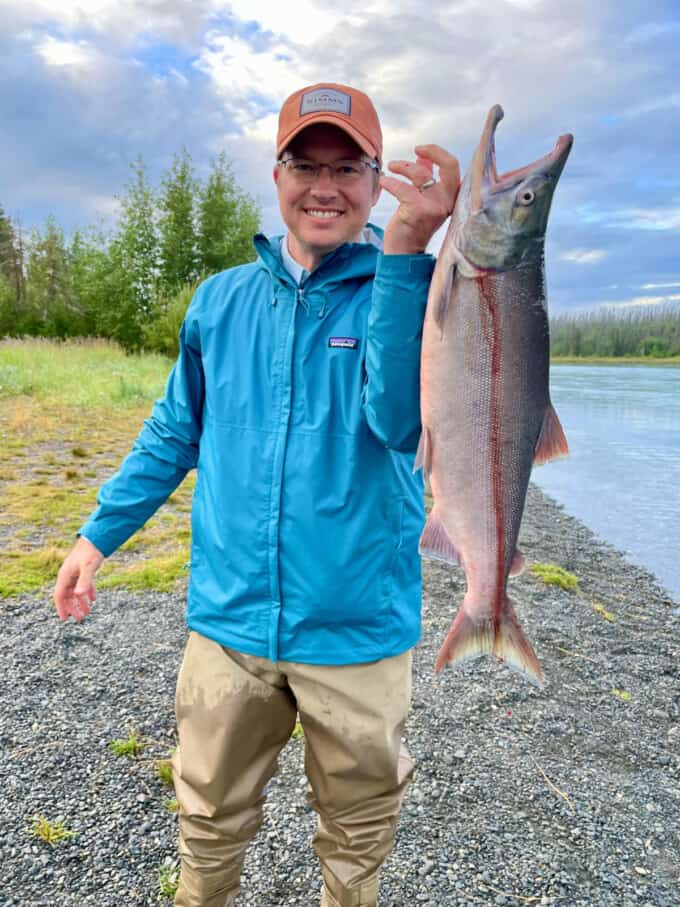

Fishing for Sockeye Salmon on the Kenai River
Paul is an avid fly-fisherman and he would be slightly chagrined to admit that we caught so many fish this way since it's not true fly-fishing, and certainly not catch-and-release which is how he always fishes. But it was a great family experience for all of us to do together and he sure was proud of his girls hauling in all the reds one right after the other.
You don't use flies, lure, or even live bait to catch sockeye salmon during the salmon run. These salmon are heading back to their spawning grounds and have only one thing on their minds. Once they leave the ocean and head upriver, they don't eat or rest or even take precautions not to get caught like most normal fish would.
That means that they will ignore flies or bait and they will swim closer to the bank then normal where the water is slower and easier to swim in. Their whole objective is to get to their spawning grounds to lay and fertilize their eggs.
As the salmon swim up the river, they continue to open and close their mouths so that water can flow through and over their gills, allowing them to breath. This is where we come in.
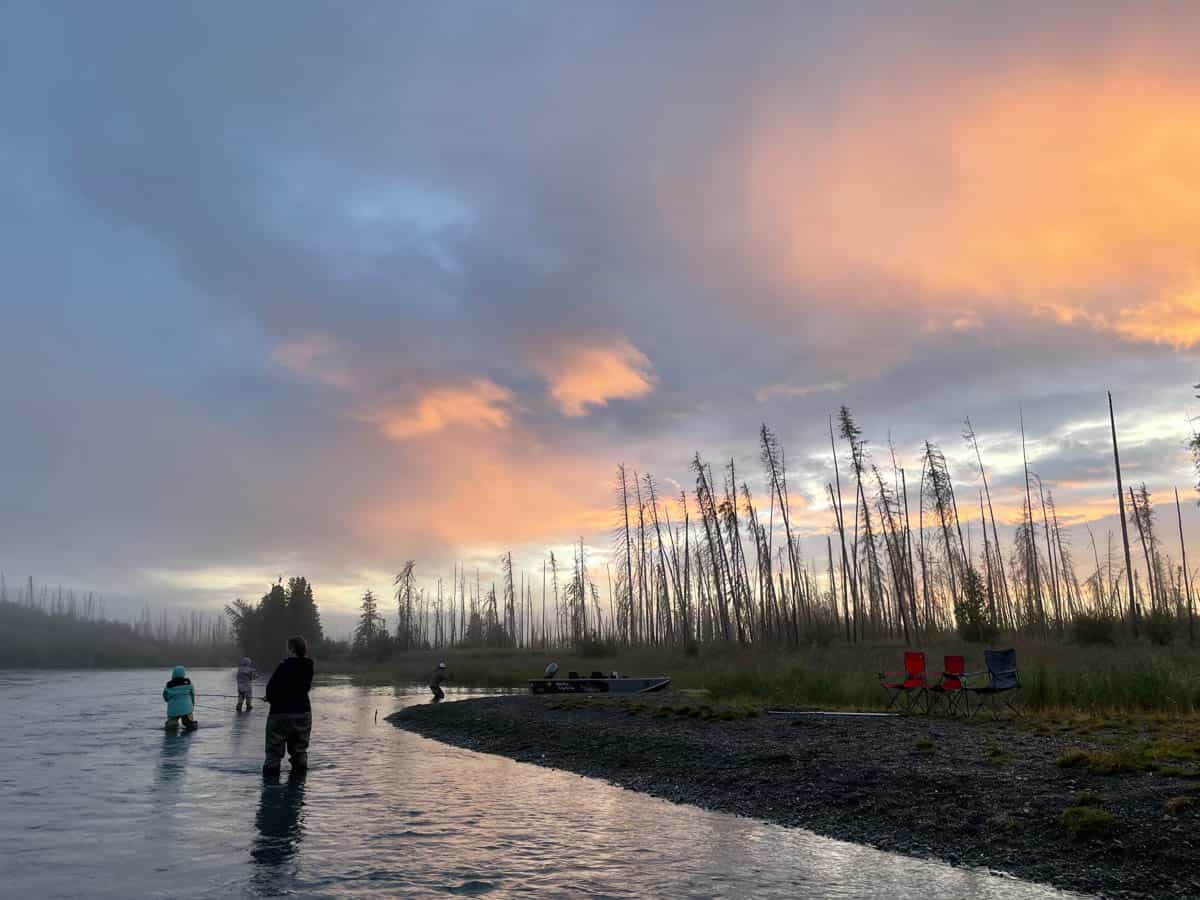
"Flossing" for Salmon
You throw out a line with a weight close to the end of the line with a hook at the very end. It doesn't need to go out far - just 10 to 15 feet - so it's not like you even need to be some great caster. When the weight hits the bottom of the river, the hook should end up floating right about level with the mouth of any salmon swimming upstream.
That's when you give a jerk to pull the hook towards the shore. It's called "flossing". With a little luck (and in our case, a good guide who knew just where to cast our lines and how to set us up for success), the quick jerk will pull the hook right through the mouth of one of the salmon making its way up the river.
There are so many fish that this is actually much easier than it probably sounds and once we got the hang out if we were reeling them in pretty quickly. Sometimes we would snag a fish somewhere other than its mouth and those we would quickly release and throw back because you aren't allowed to keep them if they are caught that way.
Once you snag a salmon, you bring it in and give it a solid whack on the head to knock it out or kill out before adding it to your stringer with the rest of your catch. Be sure to check the red salmon limit before you go so you know how many reds you are allowed to keep. Sometimes there are so many salmon swimming upstream during a large salmon run that you are allowed to keep as many as 6 salmon, which was the case when we were there.
It was honestly the easiest fishing I have ever done in my life. And definitely the most rewarding in terms of the size of our catch and the fight that the salmon put up reeling them in.
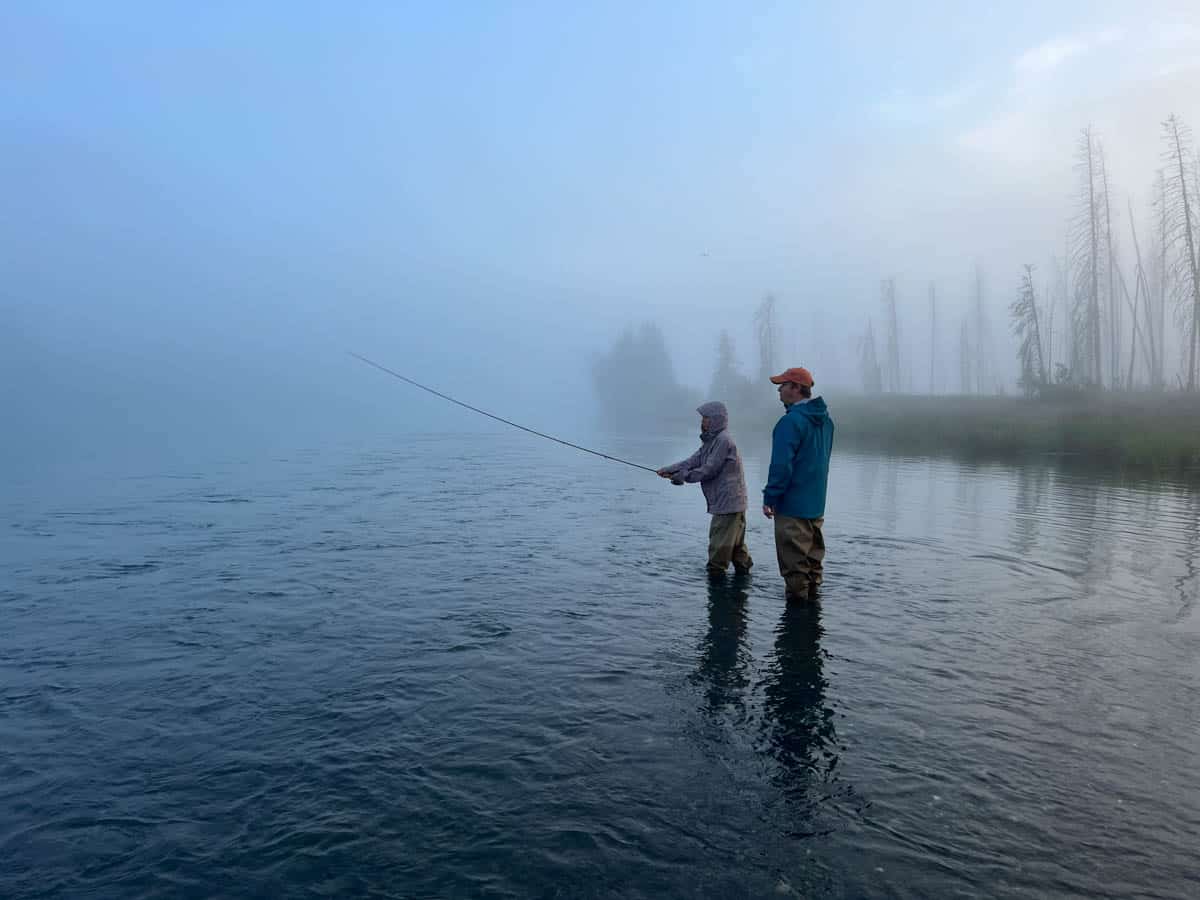
What is the best time of day to catch salmon?
Our guide explained that the best time of day to catch reds is either really early in the morning or toward evening since a lot of the salmon enter the river from the ocean overnight to start their journey.
We left at 4:00a.m. to meet up with our guide so we could get on his boat and drive about 30 minutes upriver to find an empty bank for fishing since that provides the best and easiest experience. He said that the best spots like that are pretty well-known and people get there early to snag them since only one group usually fishes from a spot at a time.
Sure enough, about 10 minutes after we landed and got set up, we saw other boats heading up river looking for their fishing spots and by the time we were leaving around 9:30a.m. there was another boat of fishermen just showing up ready to take over for us once we vacated our patch of river.


When is Salmon Season in Alaska?
Salmon season in Alaska runs from late April or early May to September with its peak in July and August. There are actually several species of salmon returning from the ocean during the annual salmon run, although they come in different groups and have different rules and regulations for catching them. We would love to have caught a king salmon which can be more than 40 pounds, but they have an earlier run than the sockeye and probably all gone by the time we were there fishing.
Do sockeye salmon taste good?
Sockeye salmon make for great eating. They are high in protein and have a good texture and flavor. There are places in Soldotna where you can take you catch and have it frozen and shipped home for you to enjoy as perhaps the ultimate Alaska souvenir.
Our family loves eating salmon and I have lots of salmon recipes that can be made with your catch like our Crispy Air Fryer Salmon Bites, Baked Salmon with Mango Salsa, Blackened Salmon, and Hot Smoked Salmon.
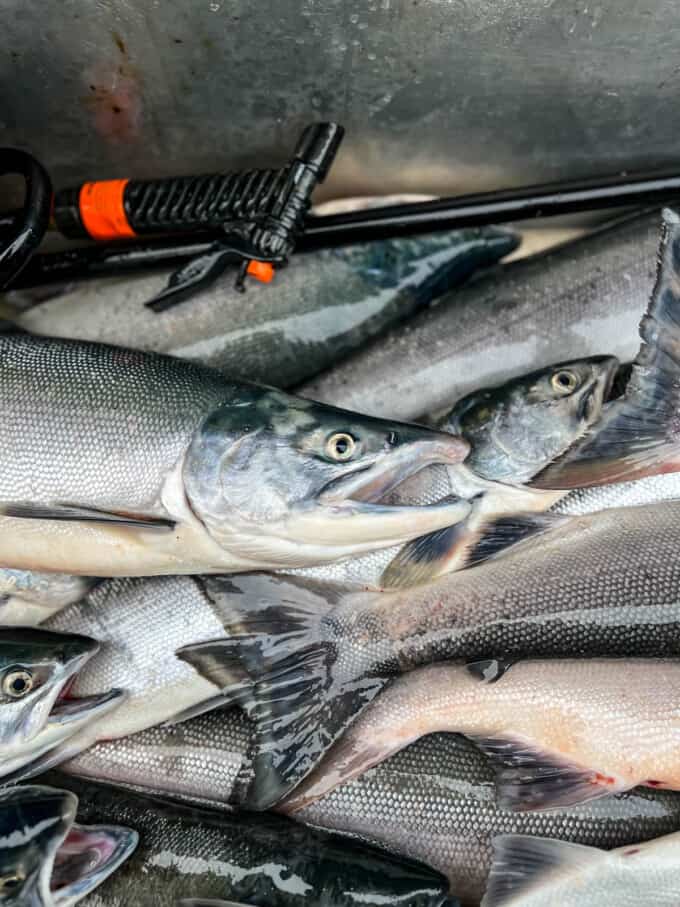
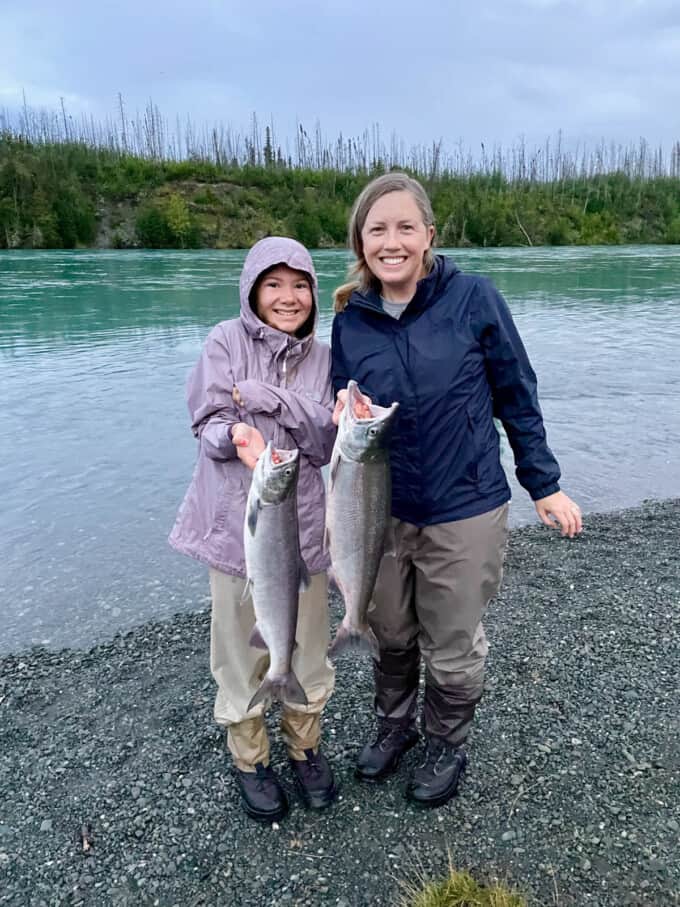
Should I hire a professional guide?
Yes, we highly recommend hiring a local fishing guide if this is your first time salmon fishing in Alaska. A good guide can help you navigate the river, locate prime fishing spots, and optimize your chances of catching sockeye salmon. Plus many of them will provide all the gear from boats to get to your fishing spot, waders and boots, rods, hooks, and reels.
The local guides have extensive knowledge of the local waters and can provide valuable insight into where the salmon are likely to be running and which techniques are most effective to snag them. You are much more likely to have a successful catch with their help and they will make the whole experience much more enjoyable.
We specifically looked for a guide who claimed to be good with kids and we definitely lucked out with our guide, James, from Alaska Kenai Fishing for Fun. He was patient and encouraging with our girls and really made them feel confident when they were starting to doubt whether they would catch anything.
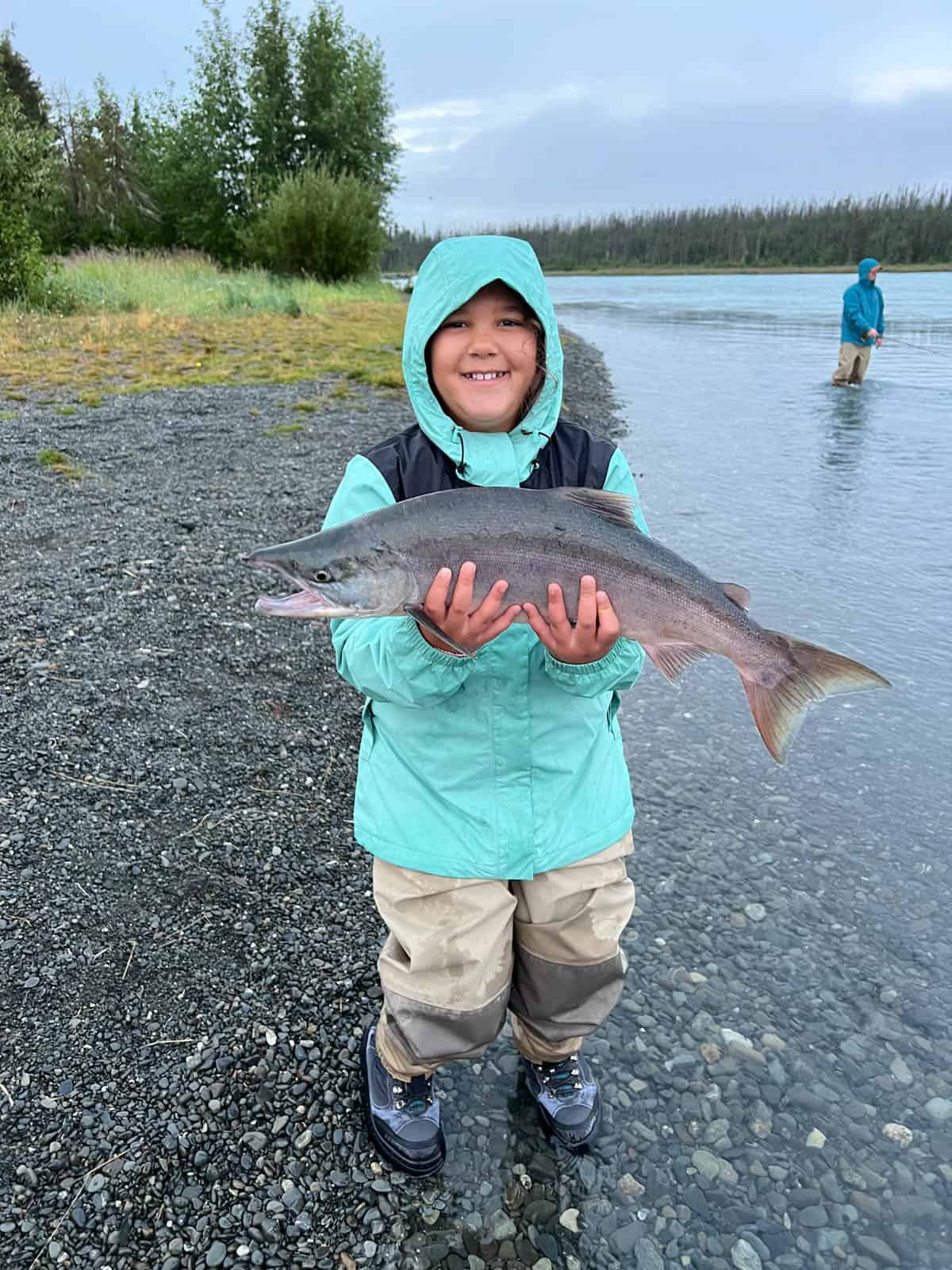
Know the Regulations and Limits
It's important for anglers to be aware of the regulations and catch limits set by the Alaska Department of Fish and Game to ensure sustainable fishing practices and the protection of salmon populations. Regulations can vary depending on the species of salmon, the time of year, the specific location within the river, and the fish count during the period.
When we were eating lunch in town our waitress explained to us that there are salmon counters at the entrance of the river that calculate how many salmon enter the river each night and they were seeing record numbers while we were there. That kind of information goes in to determining catch limits.
What Else Should I Know About Fishing the Kenai River?
- Bring cash. You might need to pay for parking or want cash to tip your guide.
- Watch for other wildlife. Keep your eyes peeled for bears, eagles, and other wildlife that congregate along the rivers on the Kenai Peninsula because humans aren't the only ones who like to feast on the returning salmon. The salmon runs also play a crucial ecological role, providing important nutrients to the ecosystem and supporting a variety of other wildlife species.
- Dress appropriately. Weather conditions can vary widely in Alaska. It was raining when we headed out in the morning and we were very grateful for our rain jackets and layers underneath. Wear layers to stay warm and dry, including waterproof outer layers to protect against rain or splashing water. Don't forget essentials like sunscreen, sunglasses, and insect repellent if you are fishing later in the day.
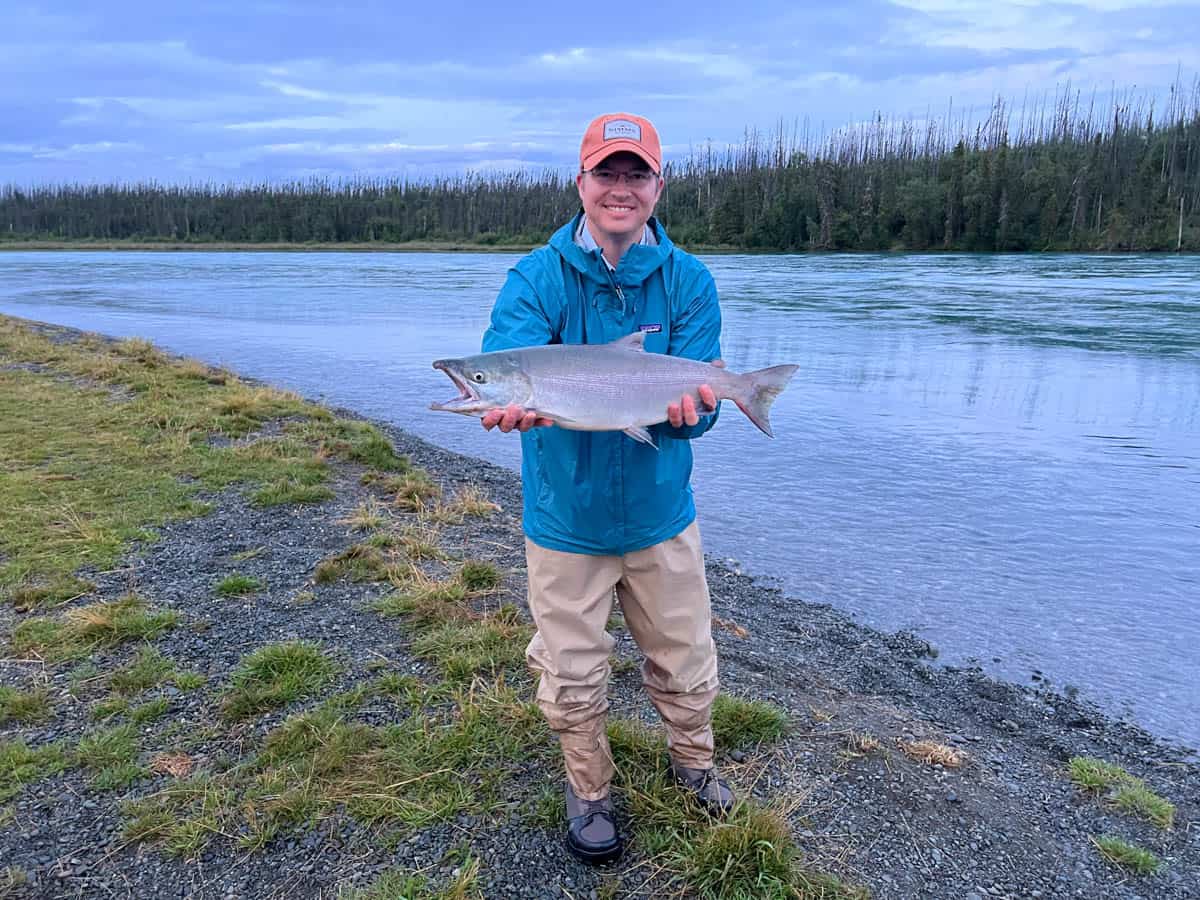
More Alaska Travel Posts
Planning a trip to Alaska? Be sure to visit some of our other posts about our favorite experiences there!
